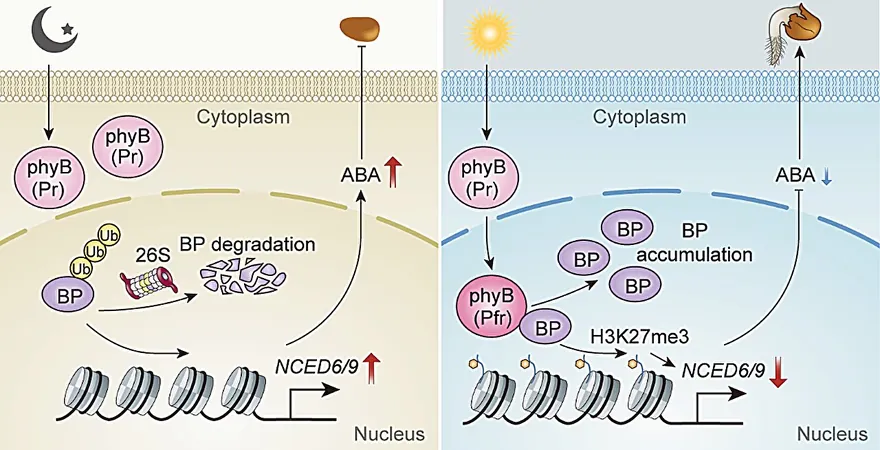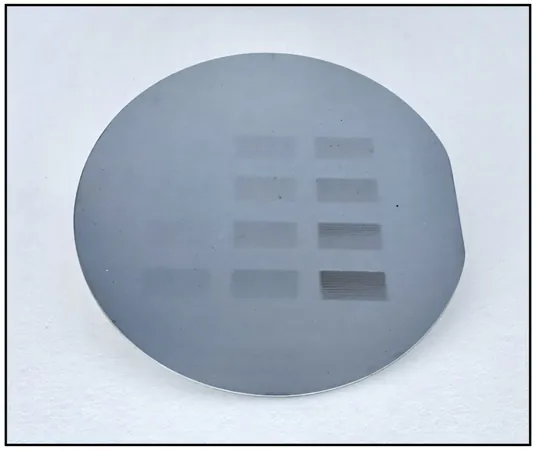
Unlocking the Secrets of Seed Germination: How Light Triggers Growth in Plants!
2025-09-10
Author: Ming
Revolutionary Findings on Seed Germination Mechanisms!
A groundbreaking study led by Professor Liu Xuncheng at the South China Botanical Garden has unveiled the intricate mechanisms that drive light-induced seed germination in *Arabidopsis*, a foundational plant used in research. Published in *Plant Communications*, this research highlights the crucial role of a transcription factor known as BP/KNAT1 and its interaction with light-sensitive proteins and hormonal pathways.
The Light Connection: Why Seeds Need Sunlight to Grow!
Seed germination represents the vital beginning of flowering plants' life cycles, and precise environmental conditions are essential for successful sprouting. Among these conditions, light plays a pivotal role, thanks to specialized photoreceptors such as phytochromes, cryptochromes, phototropins, and UVR8. Notably, phytochrome B (phyB) shines as the key player in facilitating germination triggered by light.
The Mystery Unveiled: Phytochrome and Hormonal Interplay!
While light signals and hormone interactions are understood to influence germination, the precise molecular connections, particularly between phyB and the hormone abscisic acid (ABA)—which inhibits germination—have remained elusive. This research identifies BP/KNAT1 as a critical player in linking these elements.
Discoveries Under the Microscope!
In innovative experiments, researchers discovered that *Arabidopsis* seeds with mutations in the BP gene exhibited drastically lower germination rates when subjected to light compared to wild-type seeds. But the intrigue doesn’t stop there; seeds designed to overexpress BP revealed a remarkable boost in germination rates!
Combatting Mutations: How BP Rescues Germination!
During additional genetic analysis, a phyB mutant named phyB-9 showed diminished germination. However, overexpressing BP in these mutants partially restored their ability to germinate, suggesting BP's vital role as a downstream actor in the phyB signaling pathway.
The Molecular Dance: BP and PhyB in Action!
To explore how BP and phyB interact at a molecular level, researchers employed techniques like co-immunoprecipitation. Their findings revealed a physical interaction between BP and phyB, both in laboratory settings and living samples.
How Light Stabilizes BP for Seed Growth!
Investigating further, the team observed how phyB affects BP protein levels in seeds at the germination stage. Their work showed that phyB enhances the stability of BP, preventing its degradation and allowing it to accumulate.
Cracking the Code: Transcriptional Regulation of ABA!
In a deep dive, transcriptomic analysis illustrated that BP suppresses genes responsible for ABA biosynthesis—including NCED6 and NCED9. Binding assays confirmed that BP indeed interacts directly with these crucial genes, showcasing its role in gene expression regulation.
A Glimpse into the Future of Agriculture!
By revealing how light influences the genetic and hormonal landscape of seed germination, this study not only enhances our understanding of plant development but also paves the way for agricultural innovations. Imagine harnessing these insights to improve crop yields and sustainability.
Conclusion: A Breakthrough in Plant Science!
This pioneering research uncovers a central molecular mechanism whereby red light activates phyB, which then stabilizes BP. In turn, BP represses ABA biosynthesis, paving the way for successful seed germination. As science continues to shed light on such complex processes, the potential for advancements in crop cultivation and food security becomes ever more promising!





 Brasil (PT)
Brasil (PT)
 Canada (EN)
Canada (EN)
 Chile (ES)
Chile (ES)
 Česko (CS)
Česko (CS)
 대한민국 (KO)
대한민국 (KO)
 España (ES)
España (ES)
 France (FR)
France (FR)
 Hong Kong (EN)
Hong Kong (EN)
 Italia (IT)
Italia (IT)
 日本 (JA)
日本 (JA)
 Magyarország (HU)
Magyarország (HU)
 Norge (NO)
Norge (NO)
 Polska (PL)
Polska (PL)
 Schweiz (DE)
Schweiz (DE)
 Singapore (EN)
Singapore (EN)
 Sverige (SV)
Sverige (SV)
 Suomi (FI)
Suomi (FI)
 Türkiye (TR)
Türkiye (TR)
 الإمارات العربية المتحدة (AR)
الإمارات العربية المتحدة (AR)